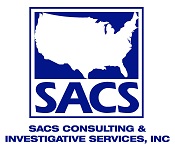Disability claims are one of the more costly expenses for employers and musculoskeletal-disorder disability claims (MSD) are among the most common. The United States Bone and Joint Initiative (USBJI), estimates that one in eight Americans of prime working age have missed work due to musculoskeletal-disorder disabilities. On average, MSD claims cost $213 billion in annual care, treatment and lost wages.
In simple terms, MSDs are conditions and injuries that affect the bones, joints and muscles, causing pain and impacting a worker’s ability to perform job related duties. The Bureau of Labor and Statistics report identifies work related MSDs as conditions that result from overexertion and repetitive motion including:
- Muscular sprain, strain and tear
- Carpal tunnel syndrome (CTS)
- Back and neck pain
- Hernia
- Arthritis
These injuries and pains are not generally accident related or caused by slips, trips or falls. Ultimately the health of the worker resides with the individual, but employers should also provide protection and take steps to avoid costly consequences.
Three Steps to MSD Prevention in the Workplace
Every employer needs to take specific steps to help prevent MSDs from manifesting in their workforce. Developing sound policies and procedures that include the mandatory use of personal protective equipment can go a long way towards avoiding issues. The CDC recommends the development and implementation of sound workplace controls that includes:
- Identifying the worker’s capabilities and limitations
- Determining what can be changed to prevent the MSD
- Including identified safeguards in the organizational policies and procedures
To understand these three steps, consider one of the most common types of MSD’s, carpal tunnel syndrome (CTS). It is the compression of the central nerve in the wrist. Individuals suffering from this disorder experience numbness, tingling, wrist weakness and muscle atrophy. 1.9 million people suffer from this disorder and are absent from work an average of twenty-five days per year.
When addressing the high rate of CTS in office workers, the three steps of MSD prevention might look like the scenario below:
- Assessing the worker’s capabilities and limitations: Is the worker able to comfortably type at their workstation? Is the worker asked to work overtime or in need of breaks to alleviate wrist strain?
- Determining what can be changed to prevent CTS. These changes might include implementing an ergonomic set up so the wrist muscles are not unnecessarily strained.
- Including the solutions in your organizational policies and procedures. For example, if an employee’s main function is typing, employers should mandate that they use an ergonomic keyboard, as well as taking three, ten minute breaks during the normal eight-hour work day.
Safeguard your business against workplace disability claims by identifying the potential contributors to MSD, implementing changes, and developing strong policies and procedures before there is a problem.
Sound Policies and Procedures Can Help to Prevent Disability Claims
SACS Consulting & Investigative Services, Inc. knows how to protect your organization against disability claims with clearly stated HR policies and procedures. Call us at 330-255-1101 to speak with one of our HR experts today!

